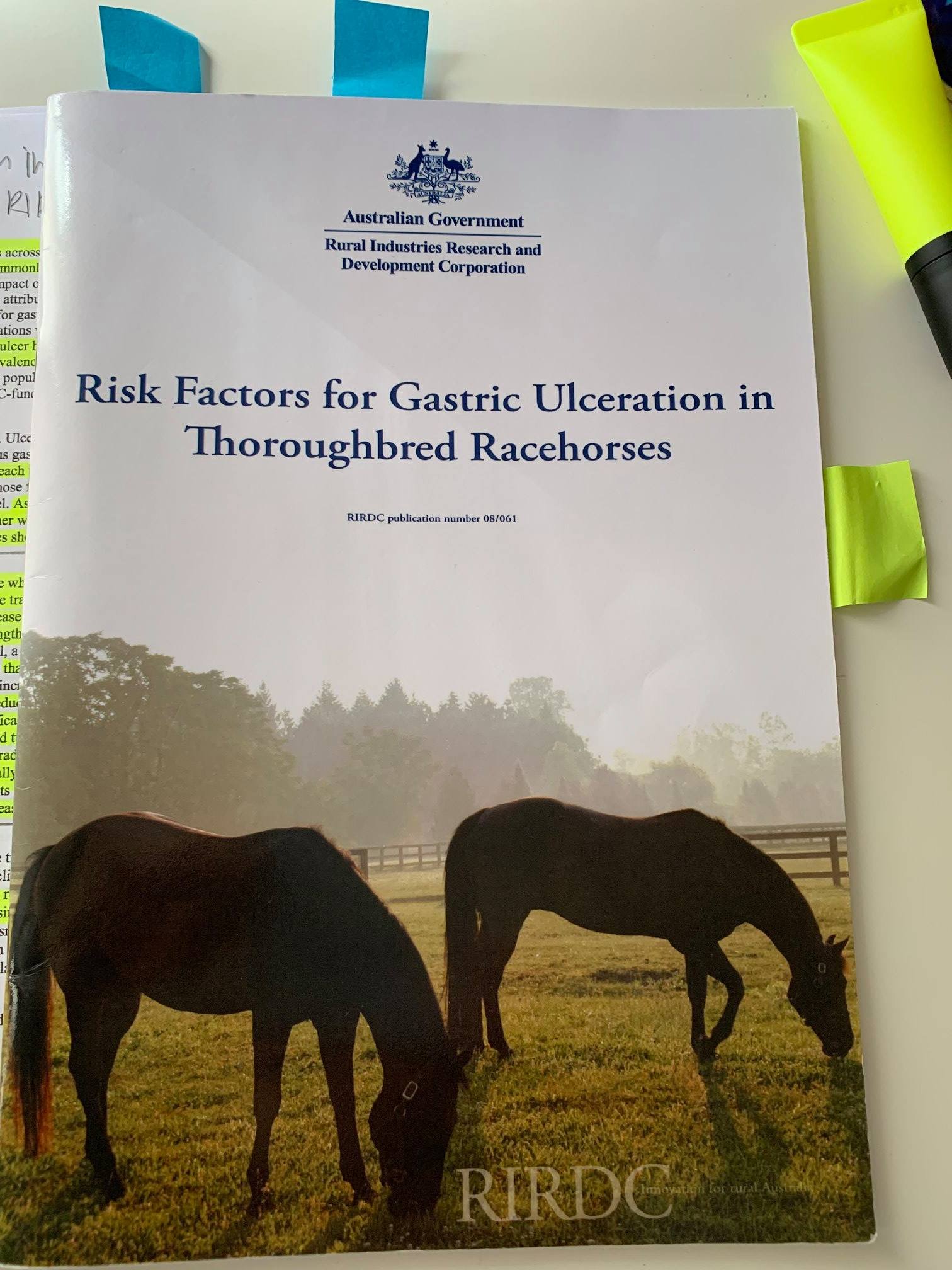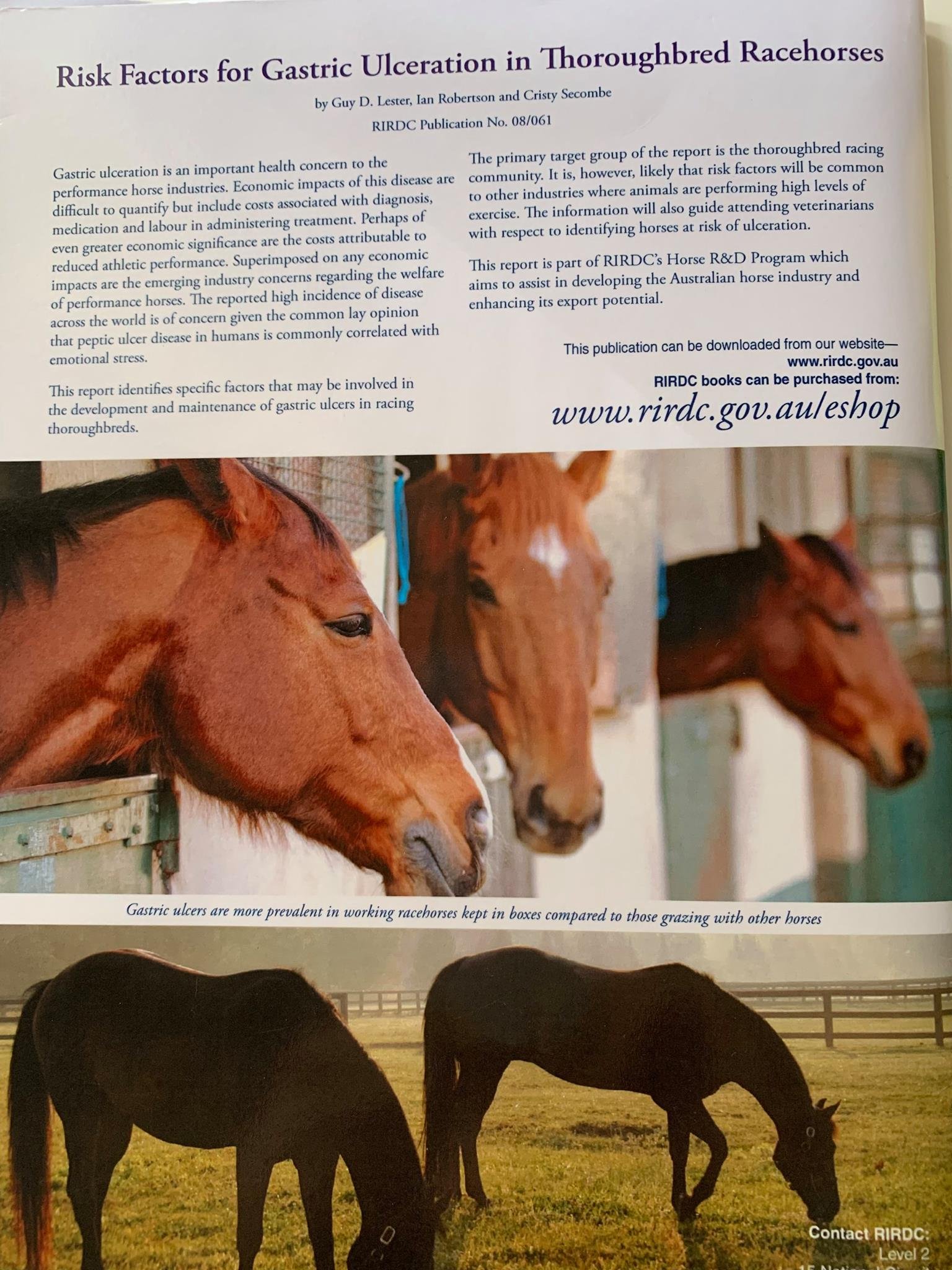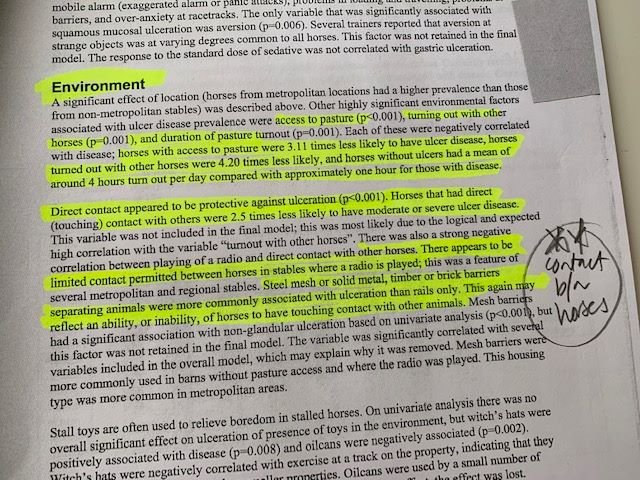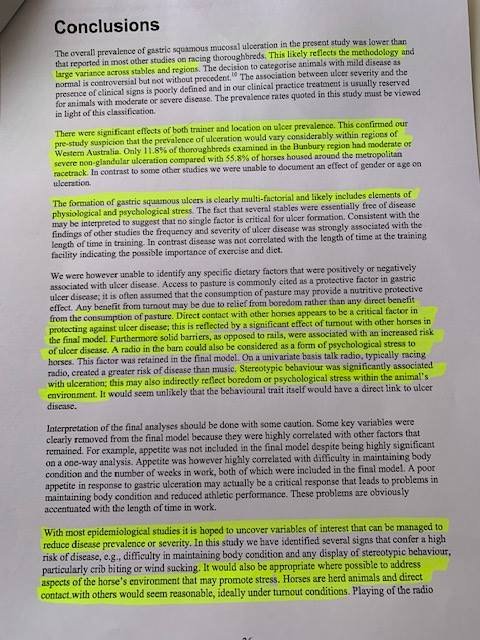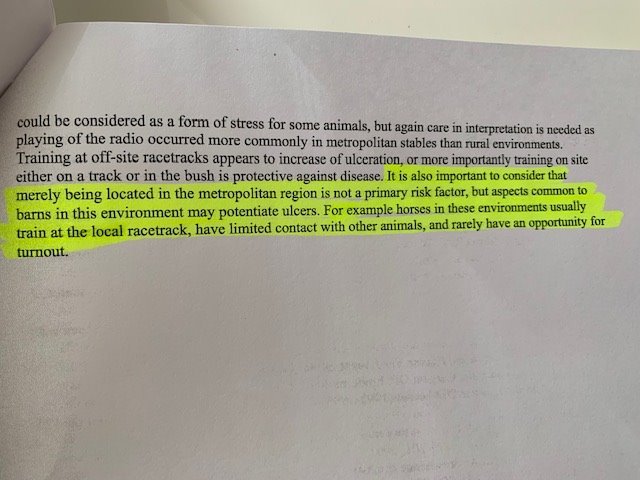Equine science article highlight: Risk Factors for Gastric Ulceration in Thoroughbred Racehorses
By Guy Lester, Ian Robertson, and Cristy Secombe,
RIRDC, 2008
This week’s post looks at the prevalence and risk factors contributing to gastric ulceration in TB race horses and how this potentially relates to horse facility design. This condition is an important health concern for all performance horses worldwide. Gastric ulceration in horses can reduce athletic performance, and cause weight loss and long term ill health which can have a negative impact on the lives of the horses, as well as the owners and trainers.
There were a number of environmental factors that were significantly associated with gastric ulceration, many involving the intensive stabling of horse in separated boxes. The application of this research to the design of the built environment is vital as the study indicates that facilities have the potential to reduce the occurrence and severity of gastric ulceration.
The article states that “although gastric ulceration is multifactorial it is likely to be caused by elements of physiological and psychological stress”. This is where facility design could make a significant difference. Stress within the stable and training environment has also many causes. One important aspect for facility design includes the provision for horses to have ‘down time.’ The simple act of placing a horse in a box to ‘rest’ may not necessarily happen if the built environment does not provide for their evolutionary requirements. Thoughtful design would consider zoning busy, people-orientated activities away from horse resting areas/times. At the same time, other research indicates that they generally have quality rest when they are in the company of other resting horses.
Then there’s still the need to relieve horse’s boredom. Maybe this points to the idea of the provision of the horse’s daily physical and visual access to outside plus horse-to-horse contact. Of course, horses that are allowed physical access to one another and how this is assisted is important. The idea of horses having the freedom of choice for optimum welfare is also raised here.
The study reminds us that horses are herd animals and contact between horses is desirable and that direct contact appeared to be protective against ulceration. Horses who are contained in stables with walls in-between had greater ulceration rates than those separated with rails only. The rails allowed contact between animals compared to the solid, meshed or grilled walls is a significant design influencer.
Interestingly, the study showed that playing the radio to horses could be a cause of psychological stress, increasing the risk of ulcers.
Environmental enrichment (EE) needs to possibly go beyond our anthropomorphic ideas, such as assuming the radio provides a means of settling, ‘company’ or boredom relief as it may do with humans. A significant role of facilities is to provide places of rest and recuperation and minimise the stress on the horses. We need to consider the evolutionary behavioural requirements of the horse in order to optimise this.
The connection between horse sterotypic behaviour and ulcers can not be ignored. The conclusion that boredom could be one of the primary initiators of both stereotypic behaviour and non-glandular gastric ulceration is valid for facility design.
Although this research took place in 2008, its findings are supported by more recent studies.
It was chosen for its range of environmental risk variables that can contribute to gastric ulcers and puts forwards a case to continue to consider and minimise these factors via responsive facility design.
These research findings can inform the overall facility design in terms of it layout and specific elements within the buildings themselves. There is so much we can do to improve the welfare of our horses with thoughtful design of the facilities. And although facilities can not replicate the benefits of access to pasture with a herd mate, whenever and wherever we do ‘need’ to ‘house’ our horses, let’s do it to the best of our evidence-based knowledge.

